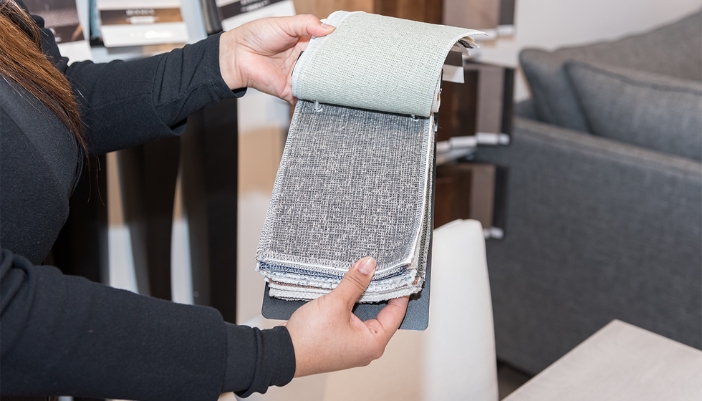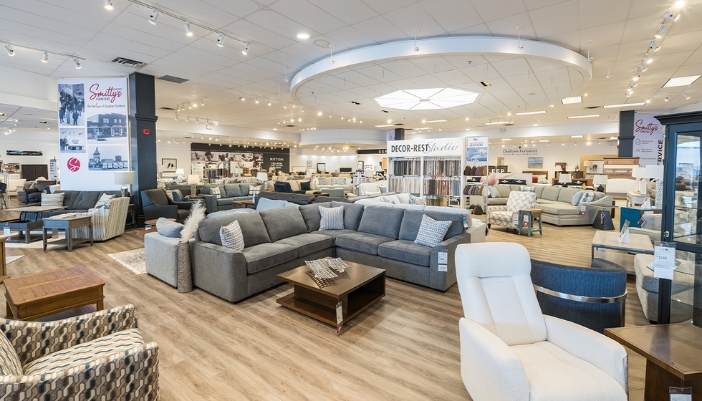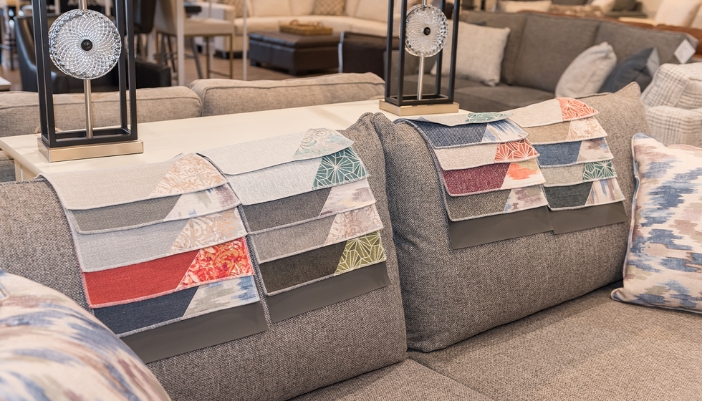Purchasing your first quality furniture pieces can feel overwhelming, especially when you're investing in items you hope will last for years. The difference between making smart choices and costly mistakes often comes down to understanding what truly makes furniture worth your money.
The key to successful furniture shopping lies in understanding construction basics, recognizing quality indicators, and developing a strategic approach to building your collection over time. When you know what to look for, you'll make confident decisions that serve you well for decades. This is where Smitty’s guide comes in.
Understanding Furniture Construction Basics
Frame Construction: The Foundation of Quality
- Solid Wood vs. Engineered Materials: The best furniture frames use solid hardwood or high-quality engineered materials. Solid maple, oak, and birch provide excellent strength and durability. Avoid particleboard or low-grade MDF in structural components, as these materials weaken over time and don't hold hardware securely.
- Joinery Methods: Quality construction uses traditional joinery techniques like mortise and tenon, dovetail joints, and dowel construction. These methods create strong, lasting connections that won't weaken with use. Avoid furniture held together solely with staples, nails, or low-quality hardware.
- Frame Stability: Test furniture by gently pushing against it. Quality pieces feel solid and stable, while poor construction will wobble or feel flimsy. Look for corner blocks and cross-braces that add structural integrity.
Upholstery Construction Essentials
- Cushion Construction: High-density foam wrapped in batting provides the best combination of comfort and durability. Down-wrapped foam offers luxury comfort but requires more maintenance.
- Fabric Attachment: Quality upholstery uses proper tacking and stretching techniques. Fabric should be taut without being overstretched, with smooth lines and consistent spacing.

Quality Indicators to Recognize
Material Quality Signs
• Wood Finishes: Quality finishes feel smooth and show consistent colour and grain patterns. Look for multiple finish coats that protect the wood while allowing natural beauty to show through. Avoid finishes that feel sticky, uneven, or show obvious brush marks.
• Hardware Quality: Drawer slides should operate smoothly without binding. Door hinges should be solid metal with proper alignment. Handles and knobs should feel substantial and be securely attached.
• Construction Details: Look for finished backs on dressers and entertainment units, adjustable shelves, and dust covers between drawers. These details indicate attention to quality throughout the piece.
Craftsmanship Evaluation
• Joint Alignment: Doors and drawers should align properly and close smoothly. Gaps should be consistent and minimal. Poor alignment indicates rushed construction or inadequate quality control.
• Surface Preparation: Quality furniture shows smooth, consistent surfaces without tool marks, scratches, or uneven areas. Sand-through areas where finish is worn away indicate poor surface preparation.
• Attention to Detail: Quality pieces feature consistent spacing, smooth edges, and careful finishing in hidden areas. These details reflect the manufacturer's commitment to excellence.
Budget Planning for Long-Term Value
Cost-Per-Year Analysis
Rather than focusing solely on initial price, calculate the cost-per-year of ownership. A $2,000 sofa that lasts 20 years costs $100 per year, while a $800 sofa lasting 4 years costs $200 per year. Quality furniture often provides better value over time.
Investment Prioritization Strategy
- Start with Key Pieces: Begin with the most-used items in your home. A quality sofa or bed affects your daily comfort and should be prioritized over occasional pieces.
- Build Gradually: You don't need to furnish everything at once. Start with essential pieces and add complementary items over time. This approach allows you to invest in quality while managing your budget.
- Consider Lifetime Costs: Factor in potential replacement costs when comparing options. Quality pieces may require a higher initial investment but eliminate the need for replacement furniture.

Smart Shopping Strategies
Research Before You Shop
- Understand Your Needs: Measure your space carefully and consider how you'll use each piece. Think about your lifestyle, family size, and entertaining habits when selecting furniture.
- Set Realistic Budgets: Allocate more budget to pieces you'll use daily. A comfortable, durable sofa deserves a larger investment than decorative accessories.
- Learn About Materials: Understand the differences between solid wood, veneer, and engineered materials. Each has appropriate applications, but knowing the differences helps you make informed decisions.
Testing and Evaluation
- Try Before You Buy: Test seating comfort, drawer operation, and overall stability. Sit in chairs and sofas for several minutes to assess comfort. Open and close drawers and doors to check smooth operation.
- Ask Questions: Inquire about construction methods, materials used, and warranty coverage. Quality retailers like Smitty's welcome questions and provide detailed information about their furniture.
- Consider Customization: Many Canadian manufacturers offer customization options that ensure furniture fits your space and style perfectly. This may be worth the additional investment for key pieces.
Common First-Time Buyer Mistakes to Avoid
- Impulse Purchases: Take time to consider major furniture purchases. Rushed decisions often lead to buyer's remorse and pieces that don't work well in your space.
- Trend-Following: Choose timeless designs over trendy styles that may look dated quickly. Classic pieces adapt to changing décor more easily than heavily styled furniture.
- Ignoring Scale: Furniture that looks perfect in a showroom may overwhelm or underwhelm your space. Always consider room proportions and existing furnishings.
- Choosing Price Over Value: The cheapest option rarely provides the best value. Consider construction quality, materials, and expected lifespan when comparing prices.
- Forgetting Hidden Costs: Factor in delivery, setup, and potential future repairs when budgeting. Quality retailers often include these services, adding value to your purchase.
- Buying Everything at Once: Spreading purchases over time allows you to invest in quality pieces gradually while learning what works best in your space.

The Canadian Advantage: Why Choose Canadian-Made Furniture
- Quality Standards: Canadian manufacturers operate under strict quality and environmental standards, ensuring consistent quality and responsible manufacturing practices.
- Customization Options: Many Canadian manufacturers offer extensive customization options, allowing you to create pieces perfectly suited to your space and style.
- Supporting Local Economy: Choosing Canadian-made furniture supports local craftspeople and communities while reducing environmental impact through shorter shipping distances.
- Warranty and Service: Canadian manufacturers typically provide better warranty coverage and customer service, with local service representatives who understand your needs.
Making Smart Choices at Smitty's
Our team understands the challenges first-time buyers face and provides guidance throughout the selection process. We help you understand construction differences, evaluate quality indicators, and develop a purchasing strategy that fits your budget and lifestyle.
Visit any of the Smitty’s Furniture showrooms to experience quality Canadian furniture firsthand. Our design consultants can help you navigate the selection process, understand construction details, and develop a plan for building your collection over time.